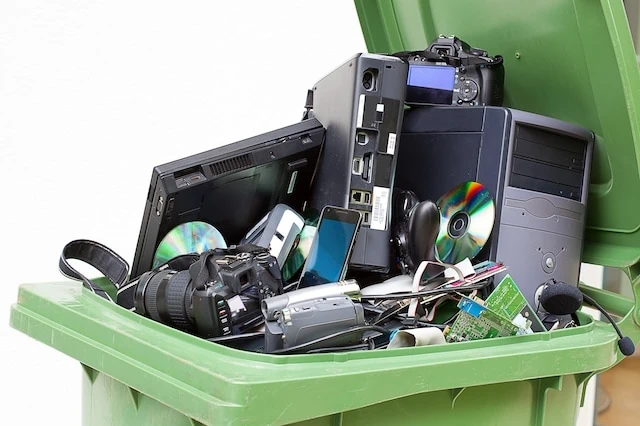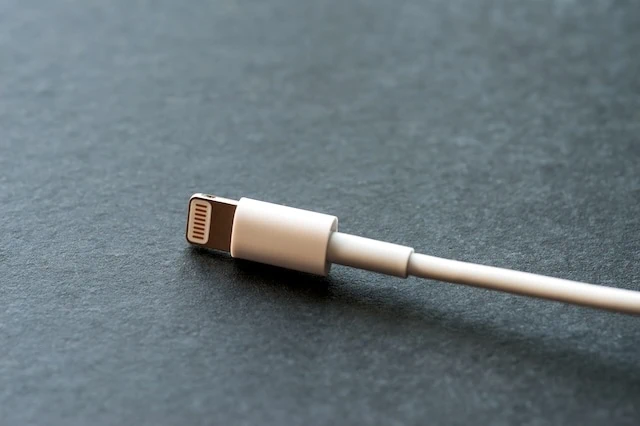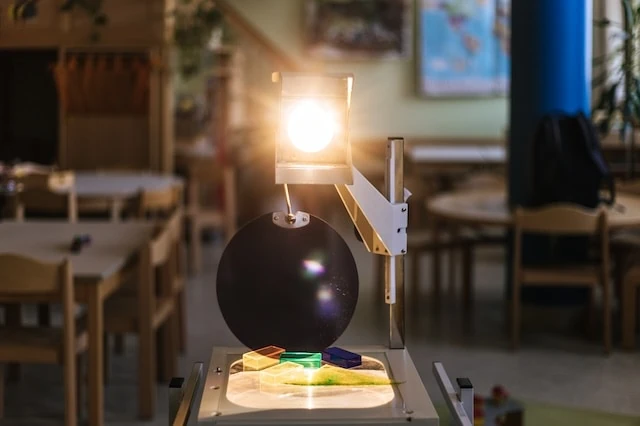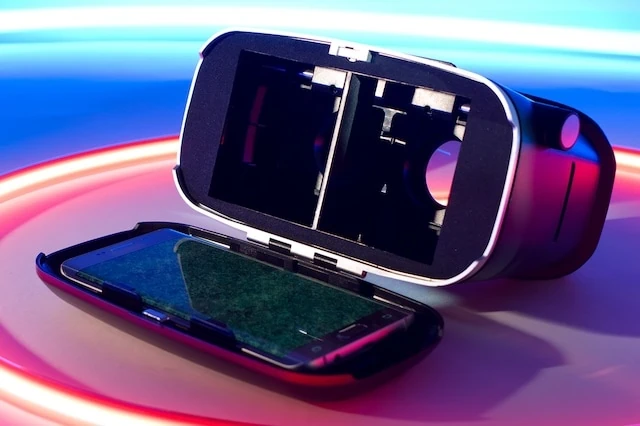Like fashion or celebrities, technology can be in one day and out the next. What was once considered revolutionary can quickly be rendered obsolete. Some technology you might have assumed was still popular may actually be disappearing quickly.
Often, certain technologies fading out is a good thing as it means there were advancements elsewhere. Though we may feel nostalgic about past technologies, overall, we’re progressing as a society. Today, we’ll go over some types of technology that will soon belong to the past.
Wave Goodbye to These Vanishing Types of Technology

Technology can fade away for several reasons. A device may lag behind competitors until it’s out of the race completely. On the other side of the spectrum, it may be too ahead of its time for consumers.
As we learn more about how the world works, the government will sometimes also get involved if tech has proven to be harmful to the planet or our health. Let’s discuss some types of technology that are going away and the reasons for their decline.
1. Magnetic Stripe Credit Cards

I can’t be the only person who looked like a complete spazz when contactless credit cards became more common, right? I would go to make a payment and start moving my hand like I was casting a spell. Do I swipe it? Insert it at the bottom? Simply hold it somewhere contactlessly? Eventually, the teenager at the cashier would tell me what to do.
Fortunately, magnetic stripe credit cards are on their way out, and EMV chips and contact solutions are in. As of 2023, roughly 94% of credit card transactions used an EMV chip. Cards with contactless options are increasingly prevalent, too—Visa, Mastercard, American Express, Capital One, and Discover all have contactless credit card options (though not every offering is necessarily contactless yet). It’s only a matter of time before the strip is eliminated. Indeed, Mastercard has already announced it’s phasing out magnetic stripes starting this year, with the intent of being fully rid of them by 2033.
EMV chips and contactless technologies are safer, cause less wear and tear, and increasingly are the only ways merchants will accept credit card payments.
Related: 50+ Best Money-Making Apps That Pay You Real Money
2. Lightning Cables

For roughly a decade, Apple’s iPhones, iPads, and AirPods had to be charged with the company’s proprietary Lightning cables. Starting in 2022, however, the company began to migrate its devices to USB-C, the universal standard in electronics charging. You can largely thank European Union regulators, who mandated that by 2024, electronic devices needed to have a standardized charging port.
While the change is annoying to people who still have Lightning cables lying around, it does make things more convenient for people who have devices from multiple manufacturers. Also, USB-C offers faster charging speeds.
You can still buy Lightning cables, for what it’s worth—they’re still used for the iPhone 13, iPhone 14, and iPhone SE, among other devices, and people still need to be able to charge their devices. However, new Apple products will no longer require them, meaning they’ll eventually be obsolete.
Also: When the time comes, don’t toss them in the trash; please recycle them.
Related: 15 Best Investment Apps and Platforms [Free + Paid]
3. Coin-Operated Parking Meters

Future generations will likely never have the experience of a driver asking their passengers whether anyone has any change for the coin-operated parking meter. No watching everyone hurriedly digging into their pockets and purses. No one triumphantly proclaiming they found quarters.
I wish I could tell you coin-operated parking meters were going away because cities are no longer charging for parking. Unfortunately, I can’t—instead, these machines are merely being upgraded to reflect today’s more popular payment apps. While some of them are credit card-operated, most of them require mobile apps for use. (To be fair, some of them are hybrid, accepting both coins and card or app.)
Upgraded parking meters might be more convenient, but they can be more lucrative for cities—and thus more costly for drivers. Smart parking can increase a city’s revenue by using dynamic pricing to charge more when demand is high. According to Straits Research, the global smart parking market size is expected to grow from $5.23 billion in 2021 to $16.54 billion in 2030.
Related: 10 Ways Banks Have Changed That Only Seniors Remember
4. Dedicated Pedometers

Pedometers—devices that track the number of steps you take—used to be all the rage. While there’s some arguments as to who invented the first pedometer (some say da Vinci way back 500 years ago), the first patent for them was given out in the 1920s. But, as a fitness metric, pedometers didn’t gain popularity until the 1960s. Since then, exercisers have had an on-again-off-again relationship with it as a way to determine whether they’re moving enough each day.
Once the CDC recommended walking at least 10,000 steps per day, people would pace in homes late at night trying to get those last few steps in. The gamified exercise undoubtedly helped some people’s overall health.
Nowadays, though, you can track your steps, distance traveled, and much more, without a dedicated pedometer. For instance, I love to track my workouts with my Apple Watch—in addition to telling me how far I’ve walked, it notes elevation changes, my heart rate, and more. If you take your smartphone on a walk, it’ll tell you your number of steps. You can even play games that will track your activity! Pokémon Go will estimate the distance you traveled searching for Azelf and hatching eggs.
In fact, the technology in smartwatches has gotten so good that even more technologically advanced fitness trackers are struggling. Fitbit has been suffering years’ worth of unit-sales declines.
Pedometers, while still manufactured today, simply can’t compete and are fading fast from relevance.
Related: How to Get Free Money Now [15 Ways to Earn Money]
5. DSLR Cameras

Digital single-lens reflex (DSLR) camera shipments have been declining every year since 2012. Data provided to Statista shows that in 2012, there were 16.2 million unit shipments worldwide—and by 2023, that number dropped to just 1.2 million. Major camera names like Nikon and Canon are among those that have announced they’d stop manufacturing DSLR cameras in recent years.
There’s no real secret behind why DSLR is falling out of practice. Smartphone cameras have long been convenient, but every year, their quality has improved—narrowing a once-considerable gap in quality. So now, rather than carry around a separate camera, most people know they can take pretty-good-quality photos from the smartphone they were already going to carry around.
Related: How to Get Free Stocks for Signing Up: 9 Apps w/Free Shares
6. Overhead Projectors

Overhead projectors became a classroom staple starting in the 1950s and 1960s. 3M didn’t invent the machine, but they designed and manufactured some of the most commercially viable ones, turning projectors into a ubiquitous teaching tool for decades.
But thanks to newer technologies, overhead projectors have been on their way out since the 200s. A series of polls by YouGov found that only 9% of respondents currently use an overhead projector—45% have used one but don’t anymore, 8% were unsure if they had used one, and 38% have never used one.
Overhead projectors have largely been replaced by interactive whiteboards called smart boards, which are more space-efficient. Plus, the interactive features help to keep kids more engaged than projectors’ static images.
Related: 12 Best Apps That Give You Money for Signing Up [Free Money]
7. Manual Transmissions

If you belong to a social media group of people who own cars of a certain brand, you’ll see a great divide: Those who can “drive stick,” and those who can’t. And it’s not entirely, but largely, generational.
If you’re in the latter group, a quick primer: Cars with an internal combustion engine (ICE) have several gears that transfer power from the engine to the wheels. As you speed up, slow down, or change direction (reverse), you need to switch gears to provide the appropriate amount of power.
For the first half of the 20th century, this was almost exclusively done with manual transmissions—cars with a third pedal (the “clutch”) that the driver pushes while switching gears with the gear shift. However, automatic transmissions (which require no manual shifting and have no clutch pedal) became much more popular during the second half of the century.
The U.S. led the way in the automatic revolution—by 1957, more than 80% of new cars in the U.S. had automatic transmissions. That number has continued to grow for decades as more people favor the relative simplicity, but also more recently amid the proliferation of electric vehicles, which either have simple automatic transmissions or none at all. According to Jalopnik, a little less than 2% of cars and light trucks sold today have a manual transmission.
So if you’re a Millennial or younger, and you haven’t used a clutch pedal, you’re not alone! I’ve never used a clutch pedal, either. Most people our age haven’t.
If you have, though, you’re probably in mourning over this trend. While automatics are easier to drive, most people I’ve talked to who have driven both say manuals are much more fun. Enthusiasts of Mini vehicles were notably vocal about the now-BMW-owned brand announcing it would be ditching manual transmissions starting in 2025.
Related: 8 Best Online Rent Payment Systems [Rent Collection Services]
8. Phone-Based Virtual Reality Headsets

Virtual reality (VR) is yet again trying to finally latch on to consumers, and who knows? Perhaps the Apple Vision Pro—while expensive and still riddled with issues—is another step in that direction.
But whatever comes next, it’s unlikely the future of VR will be in phone-based virtual reality headsets.
If the few years of this particular technology passed you by, don’t worry—most people never came across it. But in short, phone-based VR headsets were goggles in which you inserted or attached your smartphone, which would power the virtual reality experience.
These systems have all but died—the most noteworthy names in the space, including the Samsung Gear VR, Google Daydream View, and Google Cardboard, have all been discontinued. These devices largely couldn’t keep up with more powerful dedicated VR headsets like Meta’s Quest.
But even the “winners” in virtual reality have an uphill climb ahead. Research firm Circana told CNBC that U.S. sales of VR headsets and augmented reality glasses were, as of late November 2023, down 40% year-over-year, accelerating from a slight decline of 2% in 2022.
Related: Best Investing Apps for Teens Under 18 [Stock Apps]
9. Freon Air Conditioners

Early last summer, my air conditioner stopped working. It was replaced, rather than repaired, because it used R22 Freon.
That’s because since 2010, the U.S. has been phasing out use of the refrigerant, which depletes the ozone layer. Nowadays, R22 Freon is mostly banned. It’s illegal to manufacture or import R22 into the country, and people who still need existing equipment serviced must use recovered, recycled, or reclaimed R22.
Eventually, R22 stocks will diminish without a way to be replenished.
But don’t worry—there are still many ways to stay cool without Freon. The standard Freon replacement, for instance, is Puron, which doesn’t deplete the ozone layer and is more energy-efficient.
Related: 5 Best Fidelity Retirement Funds [Low-Cost + Long-Term]
10. (Inefficient) Gas Stoves

Gas stoves have been shown to have negative effects on both human health and the environment. They create small amounts of nitrogen dioxide, which the American Lung Association states can harm your lungs, causing airway inflammation, coughing/wheezing, and reduced lung function. A study published in the International Journal of Environmental Research and Public Health in 2023 suggests a connection between indoor gas stove cooking and an increased risk of asthma in children.
In early 2023, an interview with a commissioner on the Consumer Product Safety Commission suggested that the U.S. would seek to ban gas stoves—which led some people to (fraudulently) claiming the U.S. would begin ripping gas stoves out of people’s homes. The rumors continued despite CPSC claims to the contrary, as well as President Joe Biden’s own opposition to a ban on gas stoves.
On Feb. 1, 2023, the U.S. Department of Energy (DOE) proposed a rule that would require “manufacturers to certify their gas cooking tops do not consume greater than 1,204 kBtu (thousand British thermal units) per year.” The direct final rule was issued in January 2024. It prohibits manufacturers from selling gas conventional cooking tops if they consume over 1,770 kBtu per year, which you’ll notice is much higher than the 2023 proposal—thus, the law is more lenient than originally proposed.
While there is no federal ban, the state of New York decided to ban natural gas in most new buildings, starting as early as 2026.
Gas stoves are hardly going to vanish overnight, and it could be a very, very long time before they disappear completely. But at least for now, the needle is pointed in the “down” direction.
Related: 7 Best Wealth + Net Worth Tracker Apps [View All Your Assets]








